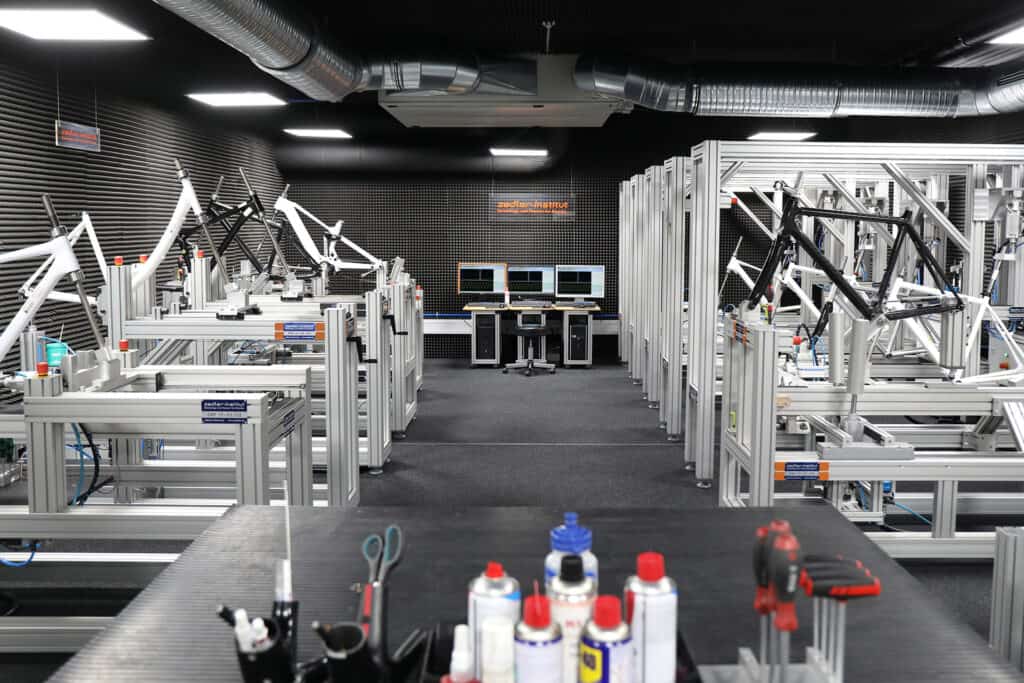It took almost 10 years for the global bicycle standard ISO 4210, published in 2014, to be reissued. However, the high hopes that the maturing process would eliminate flagrant contradictions or shortcomings or that the e-bikes (EPAC) would be integrated were not fulfilled.

To avoid any misunderstandings from the outset: it is a really good thing that this standard exists. If all bicycles on the market were tested in accordance with the standard, there would be fewer complaints and claims, not to mention recalls. On the other hand, every user of the standard should be aware that passing the tests does not guarantee adequately safe bicycles. By the way, this is also in line with the legislation and the case law in many countries. Every manufacturer must, therefore, consider how to test for their target group in order to increase the minimum requirements of the standard or supplement the tests.
New tests
The positive thing is that the revised standard stipulates that frames have to undergo more extensive testing. The brake mount must now be tested dynamically for fatigue and with overload. Still more substantial are the supplementary tests for forks made of carbon. The long-overdue test of the fork steerer tube made of the composite material has been added, as has the test of the thermal stability of the brake mount.
For the wheels the impact tests were added that are comparable to the UCI testing as well as the completely new test of the bar end plugs as a component. The road test of fully-assembled bicycles, often neglected in the industry but urgently needed, has been upgraded to include handlebar wobble.
Specified in the detail
The Standards Committee has also successfully worked on a better specification of test conditions, e.g. with regard to the test specimens for pedals, the dummy for seatpost tests and the orientation of the cranks in the dynamic fatigue test at less than 45°. In the past, there was a lot of room for interpretation in this regard, which in real test operation led to quite a lot of deviations in the actual levers and thus loads during the test.
On the other hand, it is incomprehensible that the minimum torque to be tested for bolts has been reduced. No more than 120% is basically not a reliable test of foreseeable use. The advice here is to check the standard and to also apply the proven 150 % of the maximum torque as a second step.
Dangerous instructions of other standards not adopted
It is also absolutely in the interests of the industry that paragraph 4.3.1.3 “Number and condition of specimens for the strength tests” of the EN 15194:2018 standard, which is harmonised under the EU Machinery Regulation, has not been adopted. This states that: “In general, for static, impact and fatigue tests, each test shall be conducted on a new test sample…”. You don’t have to be a rocket scientist to realise that this is highly dangerous. In practice, this procedure has not only repeatedly led to accidents resulting in personal injuries, but also to recalls.
The reason is simply explained using the example of the centre tube of a low step-through frame: during braking and due to road bumps the centre tube is bent, and twisted during pedalling. It is precisely this overlapping that no test stand can reproduce when testing horizontal and pedalling forces on different frames.
Major point of criticism not eliminated
Despite 25 years of evolution – the standard is ultimately based on the German DIN standard 79100 from the late 1990s – bicycle manufacturers are still left alone on the most important point: with the exact description of the scope of application. Permissible total weights are still not indicated. It has become usual in the industry to assume that the 100 kg repeatedly mentioned in the brake test can be applied to the entire set of regulations, but this is not explicitly stated. Likewise, the approaches to category-specific tests are only rudimentary and not in line with the categories of the long-established ASTM or the somewhat more recent, but still incomplete EN 17406 “Classification of bicycle usage conditions”.
Furthermore, there was no synchronisation of test loads and load cycles within component assemblies – despite our repeated submissions to the German Standards Committee. Explained using the example of saddle, seatpost and frame:
The fatigue test of the saddle should be carried out in general with 200,000 load cycles and 1,000 newtons (N), regardless of the category.
On the other hand, the fatigue test of a seatpost should only be carried out with 100,000 load cycles and 1,000 N for youth, city and trekking bikes and 1,200 N for road bikes and mountain bikes.
The vertical test of the frame is further reduced to just 50,000 load cycles and 500 N for youth bikes, 1,000 N for city and trekking bikes and 1,200 N for road bikes and mountain bikes.
Who knows what to make of that?
ISO 4210: Looking ahead
To make a long story short: testing in accordance with the standard does not protect against damage. The triple requirement of complying with the standard, supplying safe bicycles and obtaining release from liability for the manufacturer in the context of testing requires a lot of thought. Fortunately, there are professionals whose job is exactly that and who have gained a lot of experience. Good test centres closely monitor changes in the use of bicycles, cases of damage in practice and developments in case law. This enables their engineers to incorporate missing load types, smartly compensate for mismatching load levels and load cycles and take into account higher permissible total weights as well as the specific bicycle categories in detail for even more durable and safe bicycles in the future.
Dirk Zedler
Since 1993, Dirk Zedler has been an analyst and expert witness on bicycle accidents and product failures for courts, bike and insurance companies, and private individuals. He got his start in the industry by working for a large bike shop from 1986 on, and now holds the respected advanced engineering degree known as “Diplom-Ingenieur”.
Courts have recognized Zedler as an officially appointed and sworn expert on bicycles since 1994, and on electric bicycles since 2014.
The Zedler – Institute for Bicycle Technology and Safety has used this wealth of knowledge, derived from his and his teams work in thousands of court proceedings and expert’s reports not only in Germany but from the US to all over Europe, to enhance research and development in the bicycle industry.

The Institute proactively minimises damage for cyclists and insurers. It sets the standards for the bicycle industry. It develops and builds testing equipment that is used by manufacturers to improve the riding performance and safety of their bikes, and by leading European bicycle magazines to test them. These tests can also protect manufactures from potentially upcoming lawsuits if they fulfil the necessary safety standards. The Institute’s work provides a basis for European and American manufacturers to communicate with their Asian suppliers. Manufacturers can buy test equipment from the Institute or use its state-of-the-art testing labs.
The Zedler Institute also prepares risk assessments, conformity documents, workshops, recall papers und user manuals for bicycles and pedelecs. These manuals, now available in more than 40 languages, help consumers use their bikes properly — and in many cases have protected manufacturers from liability.
Our experts draw on the wealth of experience gained through several thousands of expert’s reports to train experts from in and outside the bike industry, such as automotive experts.
What we have learned from court cases, the proceedings of the market surveillance authorities and recalls is the content of our training courses for bicycle manufacturers. As a result, they are in a position to set up CE conformity processes internally.
For more information, visit www.zedler.de


